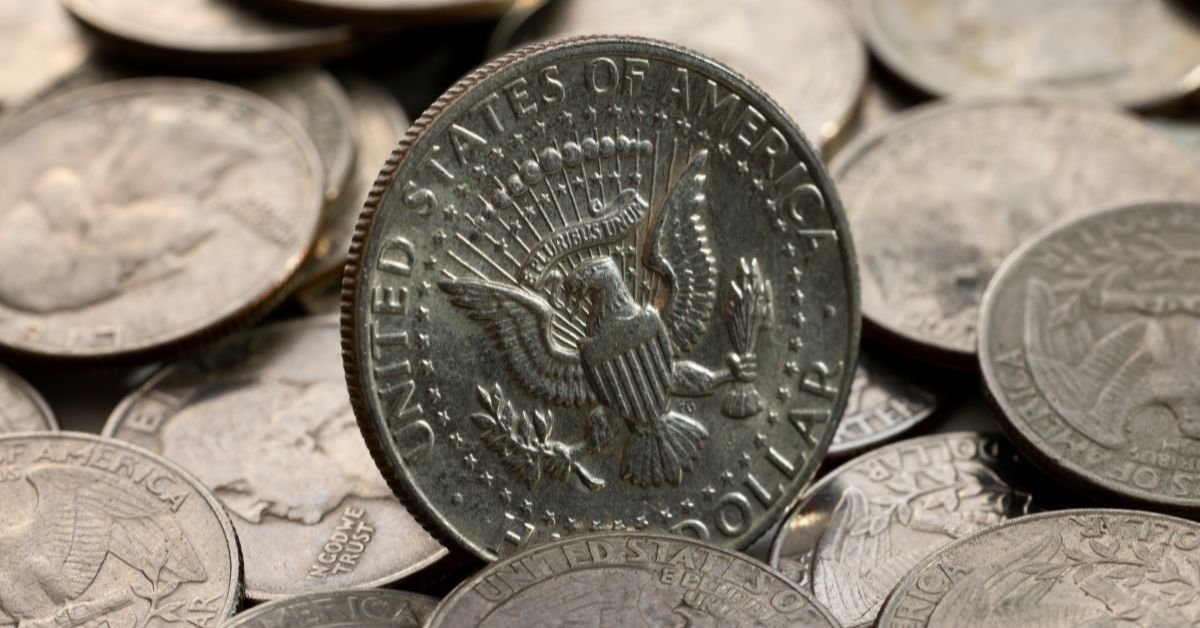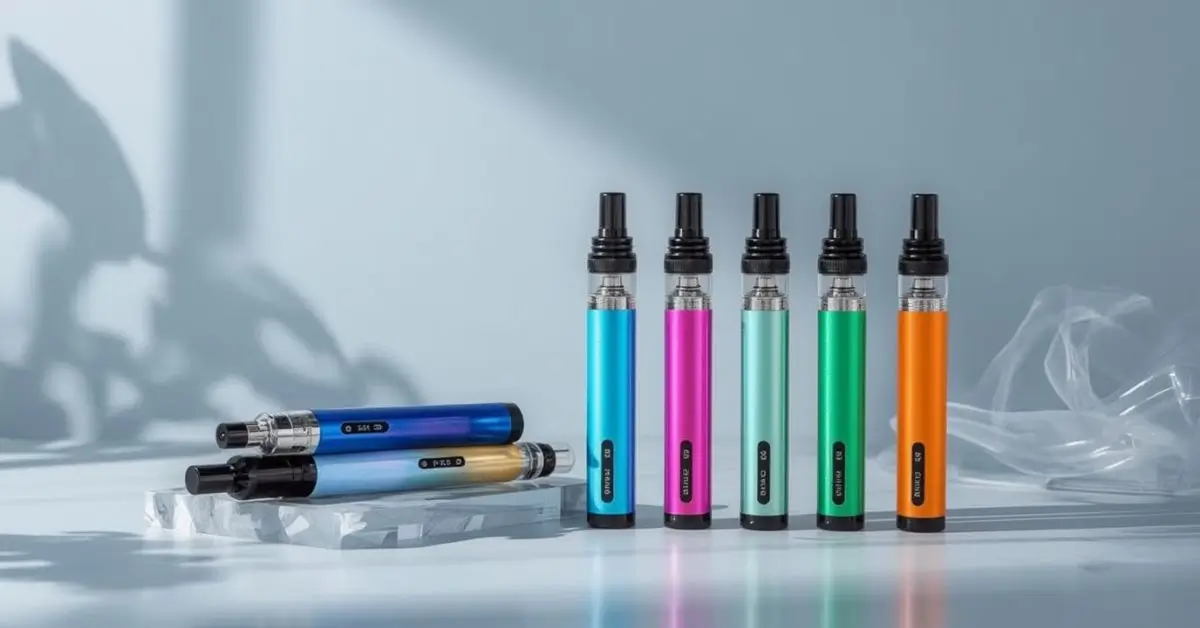BLOG
Silver Secrets: Unearthing the Rarest Dollar Coins in U.S. History

Silver Secrets The United States’ first silver dollar, the Flowing Hair type (1794–1795), introduced the nation’s initial signature coin. With production of fewer than 2,000 in 1794 and a slightly larger run in 1795, survivors are exceptionally scarce. Following that design, the Draped Bust series (1795–1804) introduced over two decades of circulation. However, pieces like the 1804 “Class I” silver dollar—erroneously struck decades after official minting ended—remains among the most mythic, with only eight confirmed examples today, collectively representing multiple millions at auction.
The Seated Liberty and Morgan Dollar Transition
Fast-forward to the mid-1800s, and we see the Seated Liberty dollar introducing refined design with fewer surviving high-grade examples than the preceding series. The iconic Morgan dollar, minted from 1878 to 1921, quickly became a collector favorite due to its artistry and widespread circulation. Yet, rarity emerges in specific mint marks and low-mintage dates like the 1893-S or the proof-only 1921 Morgan, prized for both condition rarity and historical context.
Low-Mintage Legends and Key Dates
The 1893-S Morgan: A Collector’s Holy Grail
Among numismatists, the 1893-S Morgan silver dollar reigns supreme for its extreme scarcity. Designed by George T. Morgan and struck at the San Francisco Mint, its low production—fewer than 1 million coins initially—was further depleted by circulation losses. Today, high-grade specimens routinely fetch over six figures at auctions, especially when graded by top authorities like PCGS or NGC.
The 1870-S Seated Liberty Dollar Mystery
Fewer than a dozen of the 1870-S Seated Liberty silver dollars are known to exist, possibly even fewer today. Theories range from limited minting intended for assay purposes to intentional destruction shortly after striking. Each surviving coin is a museum-quality rarity that elicits intrigue and envy.
Mint Mark Mysteries and Grading Gold Standards
Mint marks—the tiny indicators denoting where a coin was made—often hold the keys to rarity. While the Philadelphia Mint favored the “P” mark, rarer sites like Carson City (marked “CC”), San Francisco (“S”), and New Orleans (“O”) often produced more valuable rarities due to limited production.
Grading services like PCGS and NGC have formalized coin condition assessment, assigning grades from Poor (P-1) to Mint State (MS-70). Coins close to MS-65 or higher are rare in earlier mintings, elevating their value exponentially. A high-grade 1878-CC Morgan or 1895-S Morgan in MS-66 could command mid-six figures, thanks to their condition rarity.
Modern Rarity: Commemoratives and Presidential Dollars
In recent centuries, the U.S. Mint introduced denominations that admire figures and events: Presidential dollars, America the Beautiful series, and silver proofs. Some became rare instantly due to short-lived issues or special finishes.
For instance, the 2000-P Charles W. Fairbanks Presidential dollar had an extremely low mintage of proof specimens, making it a surprise target for hobbyists. Similarly, silver-proof sacramento dollars and “enhanced uncirculated” releases pulled from circulation too soon have piqued collector interest, combining modern minting finesse with unintentional scarcity.
Detecting Rare Errors and Minting Anomalies
Coin errors can elevate common coin types into valuable rarities. Among rare dollar coins, double dies, off-centers, and clipped planchets are prized for minting missteps. Even more exclusive are error silver dollars created by striking proof dies on planchets intended for circulation—unique pieces that enter the market only sporadically, often from collector hoards.
Strategies for Tracking Down Rare Dollars
Auctions, Dealers, and Estate Finds
Major auction houses like Heritage and Stack’s Bowers offer important rare dollar coins with transparent provenance. Estate sales and private collections occasionally surface Seated Liberty or Morgan rarities that had been hidden away, triggering high-profile bidding wars.
Coin Shows and Regional Conventions
Regional shows like the Long Beach Coin Expo or FUN in Florida bring dealers and collectors under one roof. These venues are ideal for inspecting and comparing coins in hand—a critical step when chasing fine-condition silver dollar gems.
Storage, Certification, and Preservation Tips
To preserve collector dollars, store them in inert plastic holders, avoid PVC sleeves, and limit handling to gloves. Grading through PCGS or NGC secures authenticity and builds market confidence, providing both protection and liquidity when the time comes to sell or trade.
Investment Outlook: Silver Dollar Value Trends
The market value of rare silver dollars typically correlates with silver prices, but their ultimate value speaks to scarcity, condition, and collector demand. Top-grade rarities and key dates appreciate faster than bullion. Modernrare issues like certain proof dollars attract lower premiums but benefit from immediate collectibility. A balanced portfolio should blend high-end vintage rarities and contemporary rare releases, offering both stability and upside.
FAQs
Q1: What makes a dollar coin rare and valuable?
Rarity stems from several factors: limited mintage, survival rate in high grades, mint marks from defunct facilities (like Carson City), historical significance, and minting errors that create unique variations.
Q2: How can I verify the authenticity of a rare silver dollar?
Authentication is best done through certified grading services such as PCGS or NGC. These companies examine weight, design details, and metal composition before sealing the coin in tamper-proof holders.
Q3: Are modern commemorative dollar issues worth collecting?
Yes—modern commemoratives or presidential dollars can be valuable due to low mintage, special finishes, and collector demand. However, they generally yield lower investment returns than high-grade vintage coins.
Q4: Can I still find rare silver dollars in circulation?
Finding classic silver dollars in everyday change is nearly impossible today. However, checking old coin collections or inherited boxes may uncover hidden treasures, especially if coins were stored consistently and graded.
Q5: How do grading grades like MS-65 and MS-70 impact value?
Higher grades indicate better preservation and fewer flaws. For rare dates and mint marks, each grade jump (for example, from MS-65 to MS-66) can increase value by thousands—or tens of thousands—of dollars for top-tier coins.
Conclusion
America’s rare dollar coins are more than metal discs—they are narrative-rich artifacts linking economic history, minting alchemy, and national heroes. Whether you gravitate toward the Flowing Hair dollar’s classical simplicity, the iconic Morgan’s artistry, or the sleek modern commemoratives, these silver secrets offer both aesthetic and financial reward.
BLOG
Is Recurbate Safe for Users or a Hidden Risk?

The question “is Recurbate safe” pops up often in online discussions. If you’ve heard of the site, you probably know it’s popular for recording and downloading cam shows. But with increasing concerns about privacy, legality, and cybersecurity in 2025, many users are right to ask: is it really safe to use? Or does it put your data, your device, and even your legal standing at risk?
Recurbate Review: What the Platform Offers
At its core, Recurbate is a website that lets users record or replay live cam shows from popular adult platforms. The draw is simple—users can access content after it has aired, which isn’t normally possible on official platforms.
Supporters argue that the site’s convenience is unmatched. But detractors highlight Recurbate security issues and ethical concerns, especially around consent and copyright.
One user mentioned on a forum:
“I used Recurbate for a few weeks. It was cool at first, but then I got paranoid about viruses and whether it was even legal. Deleted everything after that.”
This real-life feedback reflects the mixed experiences people have when they experiment with Recurbate.
Recurbate Legality: A Grey Zone in 2025
One of the biggest questions people ask is about Recurbate legality. The short answer? It depends on where you live.
- Copyright Law: Many shows on cam platforms are copyrighted by the performer or the site. Downloading or redistributing them without permission can be considered copyright infringement.
- Privacy Law: In some jurisdictions, recording someone without consent—even in an online context—may breach privacy rights.
- User Liability: While law enforcement doesn’t target casual users often, there have been cases where large-scale distributors faced legal action.
So, if you’re asking is Recurbate legit, the answer is complicated. The site itself doesn’t operate openly as a legal service, which means users are operating in risky legal waters.
Recurbate Virus Risk: Should You Be Worried?
Cybersecurity should be your number one concern. Sites like Recurbate often raise red flags for potential malware and phishing attempts.
- Pop-Ups and Ads: Many users report intrusive ads, some of which redirect to suspicious domains.
- File Downloads: Recorded videos may come with hidden malware if downloaded from unverified sources.
- Data Theft: Logging into fake Recurbate mirrors could expose your email or password.
When analyzing Recurbate virus risk, cybersecurity experts often categorize it as high. In 2025, with the rise of AI-powered phishing, even tech-savvy users can fall victim.
Recurbate Malware Safety: How Secure Is It Really?
Some users wonder if they can protect themselves with VPNs, antivirus, or private browsing. While these tools help, they don’t guarantee Recurbate malware safety.
- Antivirus may block known threats, but new malware variants slip through.
- VPNs hide your IP address, but they don’t protect your device from infected files.
- Ad-blockers can reduce pop-ups, but some scripts bypass them.
In short: you can reduce risks, but you can’t eliminate them completely if you’re accessing questionable sites.
Is Recurbate Legit in 2025?
When people search is Recurbate legit, they’re usually asking if it’s safe, trustworthy, and legal.
Here’s the truth:
- Safety: Questionable, due to malware risks.
- Trustworthiness: Low, since it operates in a legal grey area and doesn’t have transparent ownership.
- Legitimacy: No major cam platforms endorse it, which says a lot.
So, while it may function as advertised, it’s far from “legit” in the sense of being reliable or risk-free.
Recurbate Security Issues: What Experts Found
In cybersecurity audits done on adult-streaming-related domains, researchers flagged:
- Outdated SSL certificates on clone sites.
- Data harvesting trackers embedded in scripts.
- Third-party redirects that led to scam offers.
These Recurbate security issues are why even seasoned tech users warn beginners not to take chances.
Recurbate Trustworthiness: Should You Rely on It?
If a site asks for clicks, downloads, and doesn’t disclose its owners—would you call it trustworthy? Probably not.
Recurbate trustworthiness scores low because:
- It lacks official customer support.
- Its reputation is mixed in user reviews.
- Alternatives exist that don’t carry the same risks.
Ultimately, trust is built on transparency, and Recurbate doesn’t provide much of it.
Recurbate User Reviews: Real Experiences
Online Recurbate user reviews are split:
- Positive: Some say the recordings are convenient, and they didn’t face problems.
- Negative: Others report viruses, stolen accounts, or ethical guilt.
For example, one Reddit user shared:
“I tried it once, got hit with endless pop-ups, and my browser started acting weird. Not worth it.”
This mirrors the reality: user satisfaction varies, but the risks remain constant.
Safe Cam Recording Sites: Legal Alternatives
If you’re looking for safe cam recording sites, your best bet is to stick to official platforms. Many now offer replay options or subscription models that allow access to past shows.
Safer Alternatives to Recurbate
- Chaturbate Replay Extensions: Officially supported by third parties with proper permissions.
- ManyVids & FanCentro: Performers upload their own content for resale, fully legal.
- OnlyFans: Pay-per-view and subscription-based archives.
Choosing these Recurbate alternatives ensures performers are compensated and users avoid legal or malware trouble.
Pros and Cons of Using Recurbate
Pros
- Free access to recorded cam shows
- Easy to use without sign-ups
- Large selection of content
Cons
- High malware and virus risks
- Legal grey area (copyright and privacy violations)
- Low trustworthiness due to shady practices
- Ethical concerns around performer consent
Expert Tips for Safer Browsing
If you still decide to explore, here are best practices (though not full-proof):
- Use a strong antivirus and keep it updated.
- Always browse with a VPN.
- Avoid clicking ads or pop-ups.
- Don’t reuse passwords—especially not work or email ones.
- Consider safer Recurbate alternatives instead.
FAQ’s
No. Without a VPN, your IP address is exposed, and malware risks remain.
Yes, the Recurbate virus risk is significant due to suspicious downloads and pop-ups.
It depends on your jurisdiction, but in most cases, recording copyrighted shows without consent is not legal.
Platforms like ManyVids, OnlyFans, and FanCentro provide legal access to archived content, unlike Recurbate.
Final Thoughts
So, back to the big question: is Recurbate safe? The evidence points to no. Between Recurbate legality issues, malware safety concerns, and low trustworthiness, the risks outweigh the rewards.
BLOG
Jones MyGreenBucks Net: Easy Payroll Access Guide

At its core, Jones MyGreenBucks Net is a secure employee self-service system designed to handle payroll, HR, and benefit management in one place. Think of it as a digital filing cabinet where you can:
- View and download pay stubs
- Update your MyGreenBucks employee account details
- Access W-2s and tax forms
- Check direct deposit status
- Review benefits enrollment and changes
- Communicate with HR securely
Unlike older systems that required multiple logins, the Jones company payroll portal combines everything into a single secure platform.
Why Employees Depend on Jones MyGreenBucks Net
The transition to digital payroll systems was accelerated by remote work trends and cost-saving strategies. Employees now expect quick access to documents without having to email HR or wait for paper checks.
A warehouse associate shared on social media:
“Finally figured out my Jones MyGreenBucks login and got my pay stub in under two minutes. Way easier than waiting for HR to email me back.”
This type of feedback shows how the portal reduces friction between employees and payroll teams, making it an essential tool for workplace efficiency in 2025.
Key Features of the Jones MyGreenBucks Portal
The Jones MyGreenBucks portal offers a suite of features that go beyond basic payroll. Here’s a breakdown of what employees can expect:
Payroll Access
- Jones payroll online makes it easy to view paychecks, deductions, and tax withholdings.
- Employees can download a Jones net pay stub instantly, useful for loan applications, rental agreements, or tax filing.
Employee Benefits
- Through the Jones employee benefits login, staff can review healthcare plans, dental coverage, and retirement contributions.
- Annual enrollment and benefits updates are managed directly in the portal, eliminating paperwork.
HR Support
- The MyGreenBucks Jones HR portal connects workers to HR resources, including PTO requests, policy documents, and performance evaluations.
- Employees can securely message HR without leaving the system.
Security and Compliance
- With MyGreenBucks secure access, accounts use multi-factor authentication to safeguard personal information.
- The system aligns with federal compliance laws, ensuring payroll and tax records remain protected.
Step-by-Step Guide: MyGreenBucks Jones Login
Accessing the portal is straightforward, but new users often need a little guidance. Here’s how to log in:
- Visit the official Jones MyGreenBucks Net login page.
- Enter your username or employee ID.
- Input your password (case-sensitive).
- Complete the multi-factor authentication step if prompted.
- Click “Login” to access your dashboard.
Pro Tip: If you’re logging in for the first time, you’ll likely need to create or reset your password using your employee number and the instructions provided by HR.
Troubleshooting Common Login Issues
Sometimes, employees face challenges when trying to log in. Here’s how to solve them:
- Forgot Password: Use the “Forgot Password” option on the Jones MyGreenBucks portal to reset it.
- Account Locked: Too many failed attempts will lock your account. Contact HR or IT to reset access.
- Browser Issues: The portal works best on Chrome or Edge. Clear cache if the site doesn’t load.
- Two-Factor Issues: Make sure your mobile number or email on file is correct to receive login codes.
How to Access Your Jones Net Pay Stub Online
One of the most used features of Jones MyGreenBucks Net is downloading pay stubs. Here’s the process:
- Log in through your MyGreenBucks employee account.
- Navigate to the “Payroll” or “Pay History” tab.
- Select the pay period you want to review.
- Download the MyGreenBucks pay stub online in PDF format.
Employees often rely on this function when applying for credit, verifying income, or resolving paycheck discrepancies.
Managing Benefits Through the Jones Employee Benefits Login
The Jones employee benefits login allows workers to manage more than just healthcare plans. In 2025, employees expect flexible options, and this portal delivers:
- Health & Dental Insurance: Compare coverage options and update dependents.
- Retirement Plans: Adjust 401(k) contributions in real time.
- Wellness Programs: Access mental health resources, fitness reimbursements, and more.
This centralized benefits management saves time and ensures compliance with enrollment deadlines.
The Importance of MyGreenBucks Secure Access
With cyber threats on the rise, employees often worry about whether payroll platforms are safe. The MyGreenBucks secure access system uses:
- End-to-end encryption
- Multi-factor authentication
- Regular compliance audits
- Role-based permissions
These measures ensure that only authorized users can view sensitive payroll or HR information.
Comparing Jones MyGreenBucks Net to Other Payroll Systems
| Feature | Jones MyGreenBucks Net | Legacy Payroll Systems | Other Online Portals |
|---|---|---|---|
| Pay Stub Access | Instant PDF downloads | HR request required | Varies by provider |
| Employee Benefits Integration | Yes, built-in | Separate platform | Sometimes available |
| HR Communication | Secure portal messaging | Email/phone only | Limited |
| Security (MFA + encryption) | Strong | Basic login only | Moderate |
| User Experience | Mobile-friendly | Desktop only | Depends on provider |
The table makes it clear: employees benefit from convenience and enhanced security when using Jones MyGreenBucks Net compared to older payroll systems.
Real-Life Example: Payroll Made Simple
Take the case of Maria, a new retail associate. On her first payday, she worried about how to access her wages. Instead of waiting for HR, she logged into the Jones MyGreenBucks portal, set up her MyGreenBucks employee account, and downloaded her Jones net pay stub within minutes.
Her experience highlights the platform’s value: immediate, reliable access without unnecessary delays.
Pros and Cons of Using Jones MyGreenBucks Net
Pros
- Easy, centralized access to payroll, HR, and benefits
- Secure login with multi-factor authentication
- User-friendly dashboard
- Mobile-friendly design
Cons
- Requires reliable internet access
- New users may face login setup challenges
- Limited offline support if the system is down
Future of Payroll: What Jones Employees Can Expect in 2025 and Beyond
Digital payroll systems are evolving quickly. By 2025, many companies, including Jones, are introducing:
- AI-powered payroll error detection
- Real-time tax calculation updates
- Mobile-first design for easier access
- Enhanced integrations with HR and wellness apps
This means employees will enjoy faster, more accurate payroll management with fewer errors.
FAQ’s
Go to the official login page, enter your username and password, and complete the authentication steps.
Log in to your MyGreenBucks employee account, click “Payroll,” and select the desired pay period to download your stub.
Click “Forgot Password” on the login page and follow the reset instructions. If issues continue, contact HR.
Yes, the Jones employee benefits login lets you review and update healthcare, retirement, and wellness programs.
Final Thoughts
The Jones MyGreenBucks Net platform has become a trusted tool for employees who want fast, secure, and convenient payroll and benefits access. From downloading a Jones net pay stub to navigating the MyGreenBucks Jones HR portal, workers save valuable time while enjoying peace of mind knowing their information is secure.
BLOG
“Best Cheap Disposable Vapes That Deliver Incredible Value in 2025”

Cheap disposable vapes have exploded in popularity over the past few years, and in 2025 they’re still one of the fastest-growing categories in the vaping market. Why? Because they offer exactly what most people want: affordable, convenient, and hassle-free vaping. Whether you’re switching from cigarettes, looking for a travel-friendly option, or simply trying to save money, cheap disposable vapes provide a quick solution without the long-term investment of expensive vape kits.
But here’s the real question: are cheap disposable vapes actually worth it, or do they sacrifice too much in quality and safety? That’s what we’ll uncover in this detailed guide—giving you the truth about what to expect, what to avoid, and where to find the best deals.
The Rise of Affordable Disposable Vapes
Not long ago, vaping meant investing in a mod, charger, tank, and e-liquids. For many, that setup was too complicated and costly. Enter affordable disposable vapes, which changed the entire market.
Disposable vapes combine everything—battery, coil, and e-liquid—into a single device you toss once it’s empty. The price is often under $10, making them accessible for anyone who doesn’t want to commit to high-end gear.
One regular user put it this way:
“I just wanted something simple and cheap to replace my weekend cigarette habit. Disposable vapes made the transition so much easier.”
Why Budget-Friendly Vape Pens Work for Beginners
For someone new to vaping, a budget-friendly vape pen is the easiest entry point. They don’t require maintenance, charging cables, or even prior experience. You literally take one out of the box and inhale.
But there’s another reason these low-cost devices are thriving: flavor variety. Unlike traditional cigarettes, budget-friendly vape pens come in hundreds of flavors, from tropical fruit to classic menthol.
Still, beginners should know the trade-offs: disposables often have less battery power, and cheap options may not deliver the same smoothness as premium models.
Best Cheap Vapes 2025: What’s New This Year?
Every year, brands release updated models to keep up with user expectations. The best cheap vapes 2025 are now offering features once reserved for more expensive devices. Think:
- Longer puff counts (up to 10,000 puffs)
- Rechargeable batteries with USB-C
- Nicotine-free options for casual users
- Eco-friendlier materials
The gap between premium and cheap is shrinking. You no longer have to spend big to get a decent experience.
Low-Cost Vaping Devices vs. Premium Kits
Let’s compare low-cost vaping devices with traditional kits:
| Feature | Low-Cost Disposable Vape | Premium Vape Kit |
|---|---|---|
| Price | $5–$15 per unit | $40–$120 upfront |
| Maintenance | None | Regular cleaning & refills |
| Flavor Options | Wide variety | Refillable, customizable |
| Battery | Non-rechargeable / short | Rechargeable, long-lasting |
| Eco Impact | More waste | Less waste (refillable) |
| User Experience | Beginner-friendly | Suited for experienced vapers |
Verdict: If you’re after convenience and savings, low-cost vaping devices win. But for long-term use, premium kits are still more economical.
Inexpensive Vape Pens: Pros and Cons
Like anything, inexpensive vape pens come with their strengths and weaknesses.
Pros
- Low upfront cost
- Easy to use
- Wide flavor range
- No maintenance
Cons
- Lower battery life
- Inconsistent quality in ultra-cheap brands
- Environmental waste
- Not customizable
This balance is why so many people use disposables casually but keep a refillable kit at home.
Discount Disposable Vapes: How to Spot Real Deals
The hunt for discount disposable vapes is huge, especially online. But not every “deal” is genuine. Here’s how to avoid scams:
- Check nicotine strength – Fake brands often mislabel.
- Look for QR codes or authenticity seals – Most legit companies add them.
- Avoid random social media sellers – Stick to trusted vape shops.
- Read customer reviews – Watch for repeated complaints about burnt taste.
When you find a discount disposable vape that checks all the boxes, you can save 30–50% compared to retail shops.
Cheap E-Cigarettes vs. Disposable Vapes
Some people still confuse cheap e-cigarettes with modern disposable vapes. The difference?
- Cheap e-cigarettes (older models) look like actual cigarettes, often with low vapor output.
- Disposable vapes are sleeker, with better flavor and higher nicotine delivery.
If you’re in 2025, skip the outdated e-cigarettes. Disposables give far more value and performance.
Disposable Vape Deals: Where to Buy Online
Finding disposable vape deals online is easier than ever. Major e-commerce platforms, vape shops, and even subscription services now compete on price.
Top places users check for savings:
- Online vape marketplaces with bundle offers
- Wholesale suppliers offering bulk discounts
- Seasonal sales (Black Friday, New Year deals)
Vape Price Comparison in 2025
Doing a vape price comparison before buying is smart. Prices vary widely depending on brand and puff count.
| Device Type | Average Price (USD) | Puff Count | Price Per 100 Puffs |
|---|---|---|---|
| Basic Disposable Vape | $5–$7 | 500–800 | $0.90–$1.20 |
| Mid-Range Disposable Vape | $10–$15 | 2,000–3,000 | $0.40–$0.60 |
| High-Capacity Disposable | $18–$25 | 6,000–10,000 | $0.25–$0.35 |
As you can see, the upfront cost is higher for high-capacity disposables, but the cost per puff makes them more economical.
Wholesale Disposable Vapes: For Shops and Bulk Buyers
Retailers and heavy users often turn to wholesale disposable vapes to save money. Buying in bulk brings the price per unit down significantly, especially for devices with higher puff counts.
This approach also benefits small vape shops and online sellers who want to keep up with demand. In 2025, wholesale platforms have started offering eco-friendly packaging options too, which appeal to environmentally conscious customers.
Health and Safety: Are Cheap Disposable Vapes Risky?
One of the biggest concerns is whether cheap disposable vapes are safe. The truth: safety depends on the brand.
- Reputable brands undergo lab testing and follow regulations.
- Ultra-cheap knockoffs often skip safety checks, which can lead to leaks or burnt coils.
If health is a priority, avoid suspiciously low-priced products. Remember: affordability shouldn’t mean compromising safety.
Real-Life Example: How a Student Saved Money with Cheap Disposables
Take Sarah, a 22-year-old student. She used to spend nearly $70 a week on cigarettes. After switching to cheap disposable vapes, her weekly cost dropped to around $20.
“I didn’t think vaping could actually save me money, but now I spend less, and I don’t smell like smoke anymore,” she said.
Stories like Sarah’s are common in 2025, especially among budget-conscious young adults.
FAQ’s
Are cheap disposable vapes safe to use?
Yes—if you buy from trusted brands. Avoid counterfeit or no-name products, which may use poor-quality ingredients.
How long do cheap disposable vapes last?
On average, 500–3,000 puffs, depending on size. Higher-end disposables now last up to 10,000 puffs.
Where can I find the best disposable vape deals?
Look for seasonal discounts, bundles, and wholesale suppliers online. Price comparison tools also help.
What’s better: cheap e-cigarettes or disposable vapes?
In 2025, disposable vapes win—better flavor, more puffs, and wider nicotine options compared to old e-cigarettes.
Conclusion
Cheap disposable vapes have carved out a permanent space in the vaping industry. They offer affordability, variety, and convenience—three things most users want. While they’re not perfect, and safety depends on smart purchasing, the best cheap vapes in 2025 are closing the gap with premium devices.
-

 BLOG4 months ago
BLOG4 months agoShocking Gasp GIFs – Top 9 Picks
-

 TECH5 months ago
TECH5 months agoQuick Guide: How to Easily Reset Your Acer Laptop
-

 ENTERTAINMENT4 months ago
ENTERTAINMENT4 months agoTwitter Rate Limit Exceeded: What It Means and How to Fix It Fast
-

 BLOG5 months ago
BLOG5 months agoUnmasking the Risks: AI Face Swap in NSFW Content
-

 BLOG2 months ago
BLOG2 months agoIs Recurbate Safe for Users or a Hidden Risk?
-

 BLOG5 months ago
BLOG5 months agoMark Spaeny: Tailoring Success and Raising a Star
-

 BLOG5 months ago
BLOG5 months agoRagdoll Archers Unblocked: Chaos in Every Shot
-

 BUSINESS4 months ago
BUSINESS4 months agoBudget Connect: The Smartest Business Phone Service for Less


